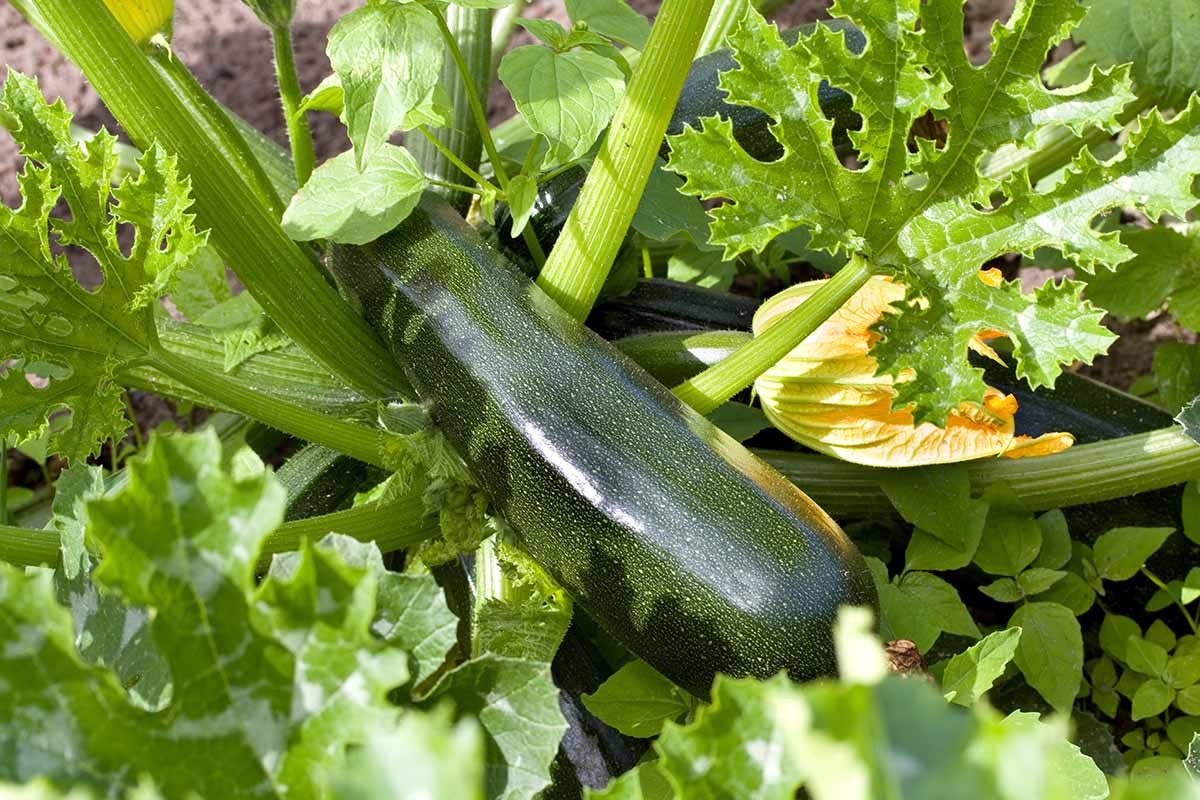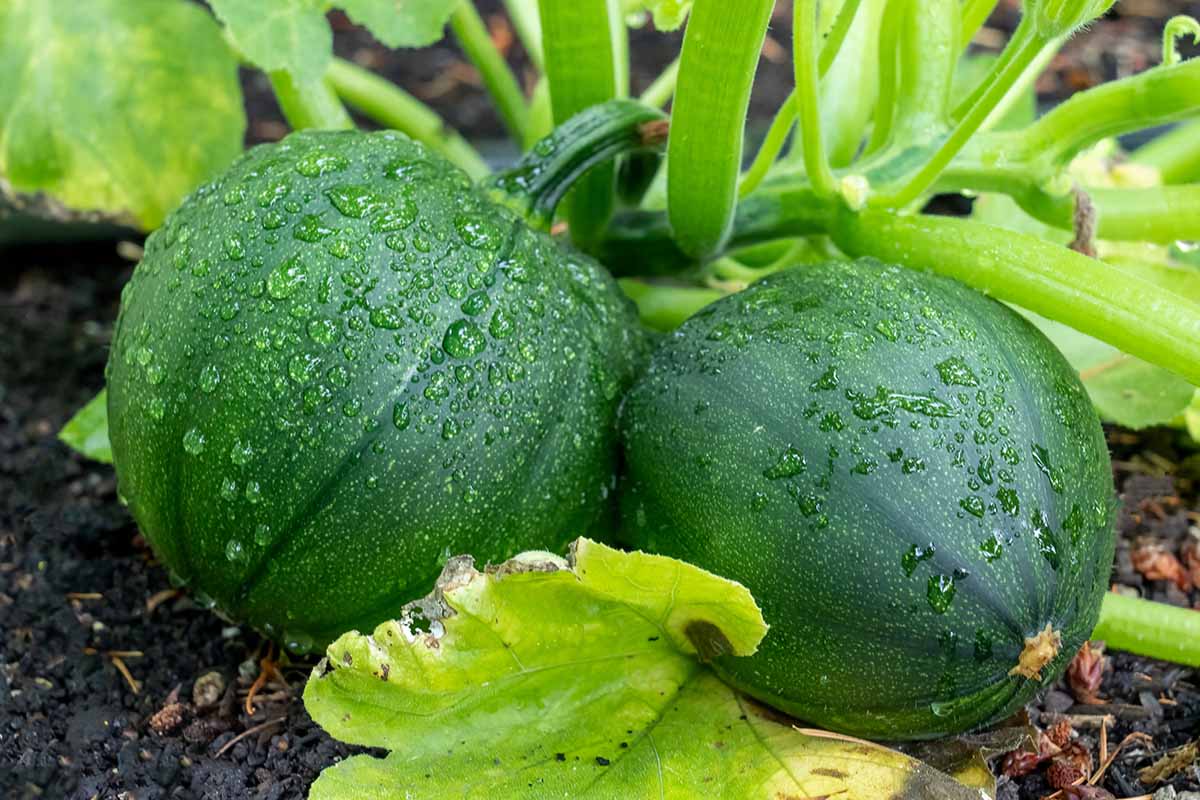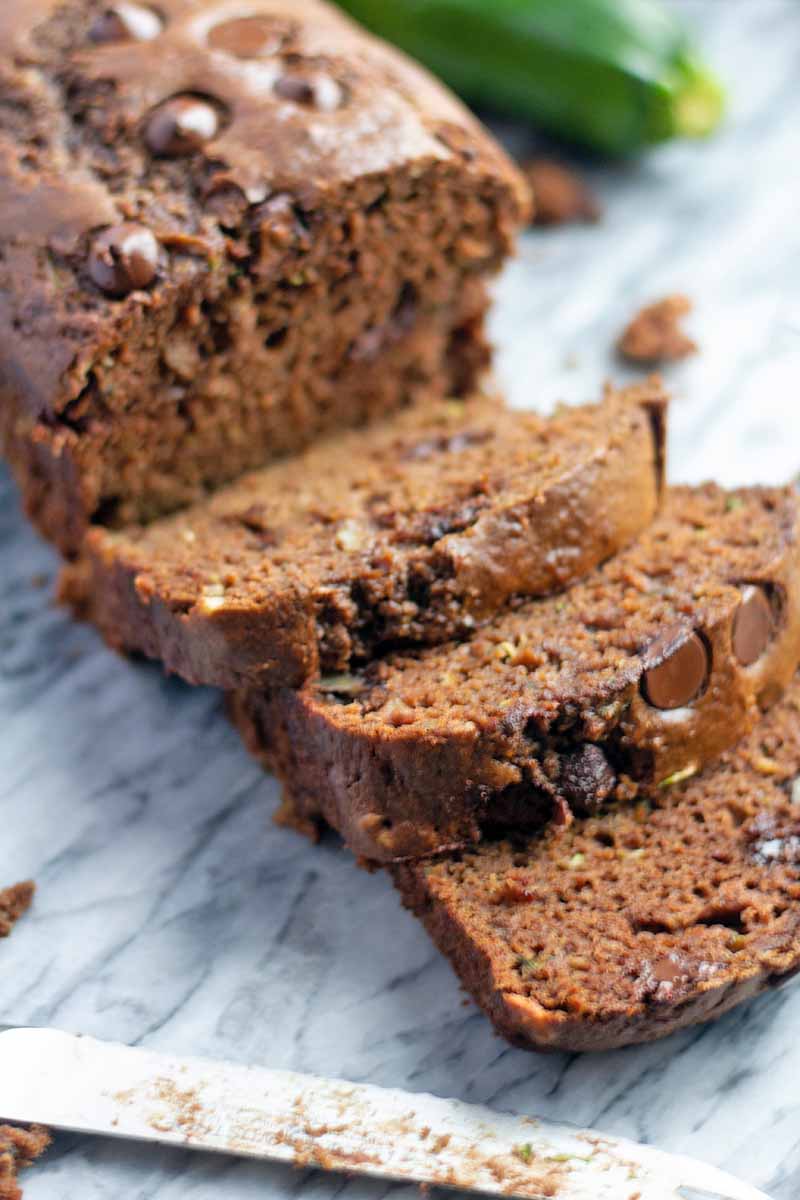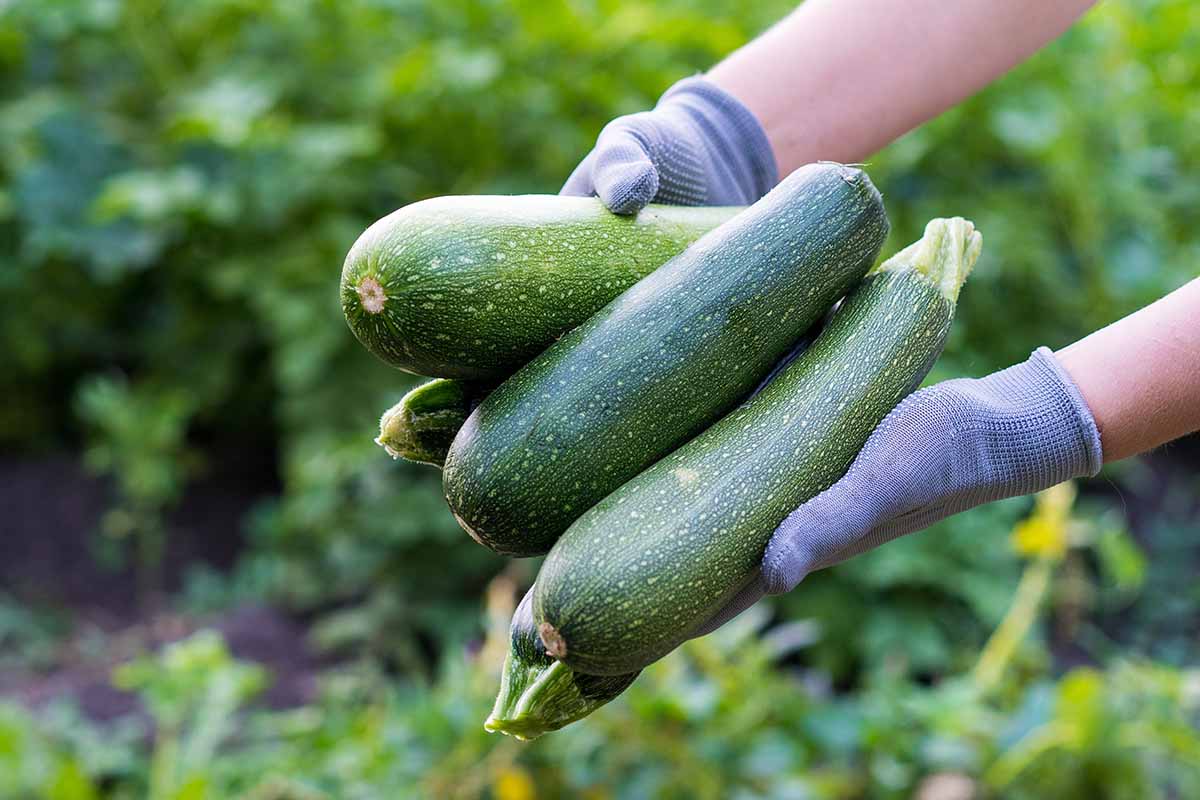
Zucchini is everyone’s favorite summer squash, perfect for beginner vegetable gardeners, but what about harvest time?
The average “days to maturity” on your seed packet will give you a clue as to when to start picking them. But you should also watch for the vegetables to reach the ideal size.
And once they’re ready, zucchini is a breeze to harvest. But you can’t just tear these vegetables off the vine – a more refined approach is required!

We link to vendors to help you find relevant products. If you buy from one of our links, we may earn a commission.
While harvesting zucchini may seem like a no-brainer, there are a few things you should know before you get started, and that’s what we’ll cover in this article.
Here’s a sneak peek:
If you feel like this is an easy-peasy garden topic that you should be able to figure out without assistance, let me put that concern to rest.
Every gardener was a beginner at one time or another, so there’s truly no shame in asking questions about simple gardening tasks!
In fact, some of us may remember the first time we took cuttings from basil to grow new plants as adults, and others may have helped us to do such tasks as young tots.
And whenever your plant growing education started, undoubtedly you will always find new gardening learning opportunities if you choose to.
So you may also wish to take a moment to make sure you’re doing everything you can to ensure a bountiful harvest by reading our guide to planting and growing zucchini squash.
When to Harvest
Whether you’re growing green or golden zucchini, you may want to first estimate your harvest window for these summer garden staples, which are also known as courgettes.
After all, that very first harvest from the squash plant is a very homey type of thrill, and you may not want to be away on summer vacation when it happens!

Just be sure to write down the date you sowed the seeds in your gardening journal or planner, check the number of days to maturity for the variety you are growing on your seed packet, then count forward to find the estimated zucchini harvest time.
If you didn’t keep your seed packet, usually this is around 35 to 75 days after sowing.
Once you arrive at the estimated zucchini harvest date and continuing until the end of the growing season, check your plants every day or two.
You should also refer to the seed packet to find the optimal harvest size for the variety.

Having said that, it’s possible that you didn’t keep your seed packet or that you didn’t sow seeds – maybe you purchased nursery grown seedlings to transplant into the garden instead.
So here’s a good rule of thumb: for oblong types, pick the squash when they are six to eight inches long and around two inches wide. Round courgettes are generally best picked when the fruits are the size of a softball or smaller.
Size isn’t the only visual clue of ripeness, the skin of the squash should be tender, firm, and glossy.

Some varieties can be harvested at larger sizes without losing quality. I typically pick ‘Costata Romanesco,’ one of my favorite varieties of zucchini and summer squash, when they are 10 inches or larger.
‘Costata Romanesco,’ however, is a bit of an exception, and most varieties are at their best when in that smaller range.
Picking the courgettes when they are six to eight inches long is honestly easier said than done. Summer squash fruits often grow quick as lightning, and it can be hard to keep up with the harvest – which is why it’s important to check your plants every day or two.
I swear that in the past I have spotted young squashes only a couple of inches long on the vine, and after a day of rain, I’ve returned the next day to find those same squashes the size of baseball bats!
And I know I’m not alone.

If you miss a harvest and end up with huge summer squashes, of course you can always turn them into zucchini bread.
Once the seeds inside the fruits have started to get hard, you will want to scoop them out. The skin may also be hard – if so, cut it off before transforming the squash flesh into delicious baked goods.
And if you’re starting to get hunger pangs, I’ll be sharing recipes later in the article, so keep reading!

There’s another reason you’ll want to pick squash before they get too big – harvesting zucchini frequently encourages continuous production.
And if the fruits are picked regularly, once they start producing, they can keep going all the way up until the first frost kills the plants.
You can, however, delay this inevitable end to the summer party by protecting your plants from frost to extend the growing season. Even so, eventually you’ll need to do a final zucchini harvest, picking every last fruit, no matter the size.
You’ll no doubt have some teeny tiny baby squash on your vines when it’s time for the last zucchini harvest, and you can pick those too. Just make sure to use them quickly as they don’t keep as well as mature fruits.
How to Harvest
To harvest zucchini, you can use a sharp knife, the serrated edge on a hori hori, or a pair of garden pruners.
If you try to snap off a squash from the vine using brute force, more often than not it will break the fruit in half, so it’s really best to use a sharp blade for this job.

You may also want to wear gardening gloves for the task since squash foliage and fruits have prickles that can irritate your skin.
Cut the squash from the plant, taking about a half an inch to an inch of stem with it. Leaving that extra bit of stem at the end will help these veggies stay fresh for longer.
If you accidentally cut one off without that bit of stem it’s not a big deal, just be sure to use that vegetable as soon as possible.

Also, ideally you’ll snip off the squash without cutting any leaves or stems off the plant.
However, sometimes the position of the squash makes cutting it off a bit awkward.
So while pruners may work fine sometimes, at other times you may need a knife instead, since it’s not always possible to maneuver the pruners around the stem, especially if you’re battling through a lot of foliage.
Storing and Preserving After Picking
Your summer squash crop will be at its most sublime when harvested right before you’re ready to cook it.
If you harvest more than you can eat immediately, you can store your haul on the countertop for a day or two.
Better yet, put the freshly harvested vegetables in the fridge in a plastic bag where they will keep for up to a week in the crisper drawer.
But rather than washing courgettes before placing them on the counter or in a crisper drawer in the fridge, wait and wash them right before cooking. This will help them keep longer.

Have your plants produced a bumper crop?
After giving part of your zucchini harvest away to friends, family, neighbors, and distant relations, you should really consider preserving some for winter!
Winter always feels so far away when summer’s heat is bearing down on you, but once those cold months roll around, it’s a pleasure to cook up a reminder of warmer days.
And you have options when it comes to preserving these summer squash, so you’re likely to find at least one method that will suit your fancy: freezing, dehydrating, or pickling.

To freeze your zucchini, wash and cut them into quarter-inch slices. Blanch them for three to five minutes, then immediately plunge the slices into an icy water bath for three minutes.
Drain the excess liquid, freeze the slices in a single layer on a cookie sheet, then transfer them to freezer containers labeled with the date and contents.
Courgettes will store well in the freezer for approximately 10 months.

Not into freezing? Courgettes can also be dehydrated for later use.
You can learn more about dehydrating garden vegetables in our complete guide.
Wondering why I didn’t mention canning in your options?
The USDA no longer recommends canning summer squash with pressure canners due to safety concerns.
So if you want to can your zucchini harvest, it’s best to use a pickling method, as described in this recipe for bread and butter zucchini pickles from our sister site, Foodal.

Since pickles are acidic, they don’t carry the same health risks as low-acid vegetables when it comes to canning.
You can also make refrigerator pickles, or lacto-fermented pickles – both of which require refrigeration for extended storage.
Why not try this recipe for lacto-fermented dill pickles, also from Foodal – and substitute some of your squash crop for the cucumbers?
Recipes and Cooking Ideas
If you’re looking for cooking ideas for your fresh (or frozen!) zucchini harvest, we’ve got you covered.
Summer squash and pasta are a perfect pair – particularly when you add homegrown tomatoes or homemade pesto to the mix.
So let’s start with this recipe for grilled courgettes and white bean pasta. It also features fresh tomatoes, arugula, and garlic for a satisfying Italian-style meal or side dish. You’ll find the recipe at our sister site, Foodal.

I mentioned pesto, and don’t think I forgot about it! How could I?
Pesto is of course one of the most mouthwatering ways to enjoy that extra basil from the garden.
And when you combine pesto with courgette noodles and juicy peaches, you have the perfect refreshing summer meal! Learn how to make zucchini spaghetti with peaches and pumpkin seed pesto also on Foodal.

Did you let some of your crop grow big on purpose, so you’d have an excuse to make a sweet quick bread?

Why not try this recipe for fudgy chocolate zucchini bread over on Foodal.
Pick Zucchini When They’re (Kind of) Teeny
Now you know when and how to harvest zucchini for the ultimate taste and texture and you’ve also gleaned some preservation and recipe ideas as well.

Harvesting zucchini is pretty easy! But if you have any remaining questions on this topic, feel free to post them in the comments section below.
There’s just one more thing before you go out to gather fresh food from the garden.
What I really want to know is – what’s the biggest summer squash you’ve found in your garden patch? Let’s just say I’m holding an unofficial contest in the comments section.
If you win, you will receive – wait for it – the glorious satisfaction of knowing you’ve produced a behemoth. Can’t beat that, right?
And if you’re looking for more zucchini knowledge, keep reading right here:






